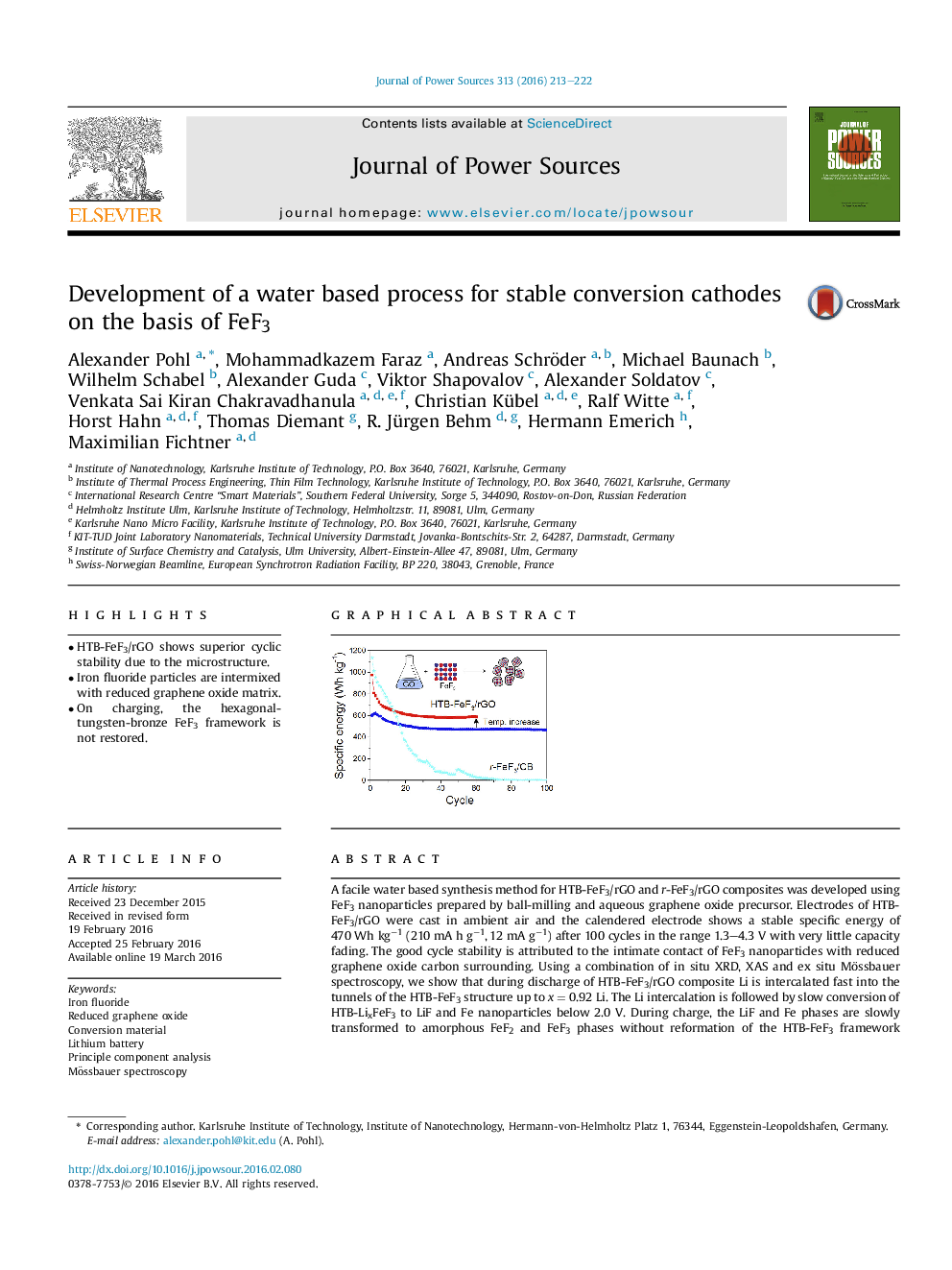| Article ID | Journal | Published Year | Pages | File Type |
|---|---|---|---|---|
| 1286253 | Journal of Power Sources | 2016 | 10 Pages |
•HTB-FeF3/rGO shows superior cyclic stability due to the microstructure.•Iron fluoride particles are intermixed with reduced graphene oxide matrix.•On charging, the hexagonal-tungsten-bronze FeF3 framework is not restored.
A facile water based synthesis method for HTB-FeF3/rGO and r-FeF3/rGO composites was developed using FeF3 nanoparticles prepared by ball-milling and aqueous graphene oxide precursor. Electrodes of HTB-FeF3/rGO were cast in ambient air and the calendered electrode shows a stable specific energy of 470 Wh kg−1 (210 mA h g−1, 12 mA g−1) after 100 cycles in the range 1.3–4.3 V with very little capacity fading. The good cycle stability is attributed to the intimate contact of FeF3 nanoparticles with reduced graphene oxide carbon surrounding. Using a combination of in situ XRD, XAS and ex situ Mössbauer spectroscopy, we show that during discharge of HTB-FeF3/rGO composite Li is intercalated fast into the tunnels of the HTB-FeF3 structure up to x = 0.92 Li. The Li intercalation is followed by slow conversion of HTB-LixFeF3 to LiF and Fe nanoparticles below 2.0 V. During charge, the LiF and Fe phases are slowly transformed to amorphous FeF2 and FeF3 phases without reformation of the HTB-FeF3 framework structure. At an elevated temperature of 55 °C a much higher specific energy of 780 Wh kg−1 was obtained.
Graphical abstractFigure optionsDownload full-size imageDownload as PowerPoint slide
